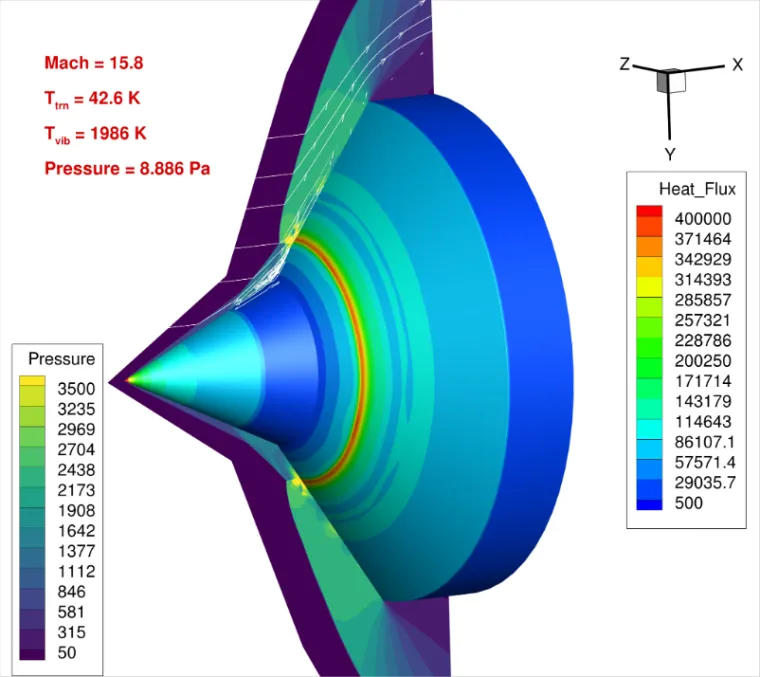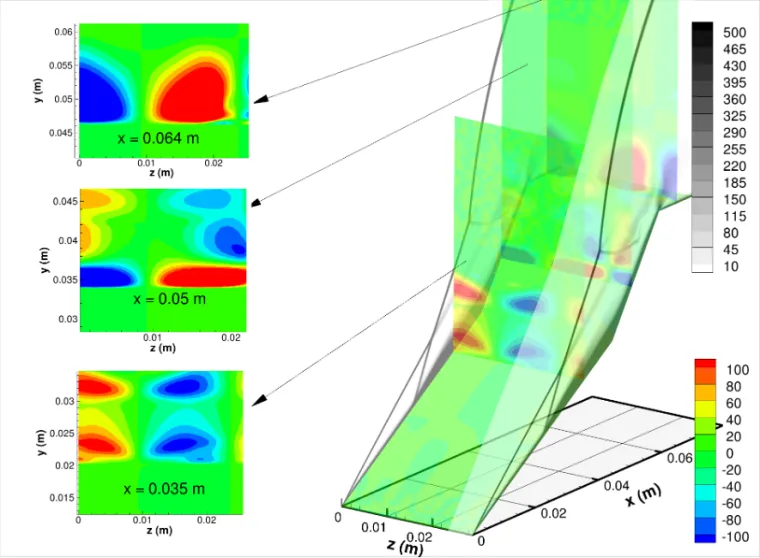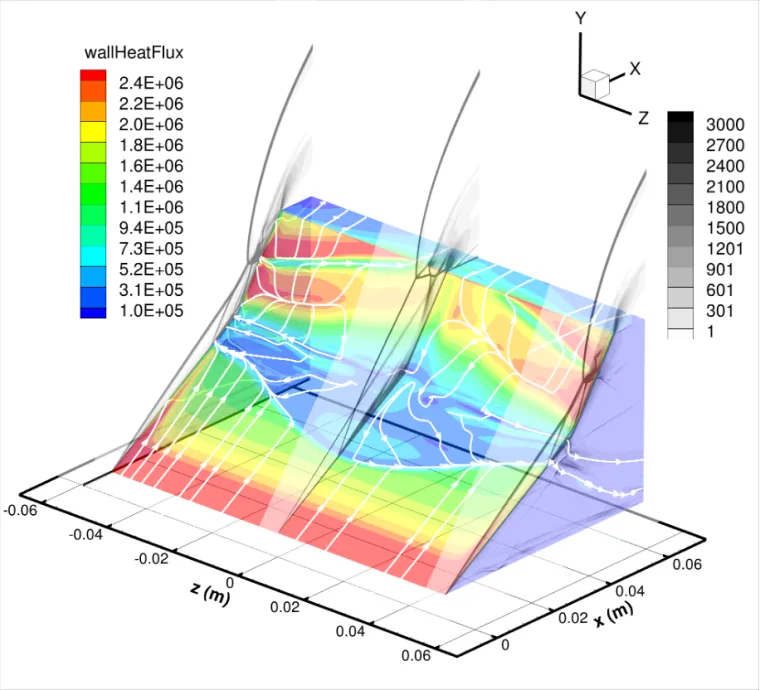Shock wave boundary layer interactions (SWBLIs) occur as an outcome of the interaction of external shock waves with boundary layers. These interactions, commonly seen in deflected control surfaces and inlets of hypersonic vehicles, can cause unsteady oscillations, buffeting, and localized high heating and pressure regions with distinct degrees of thermochemical nonequilibrium. Intense localized heating and pressure load could destroy vehicles, especially when an external shock impinges on a boundary at hypersonic speed, as can be seen below. Therefore, accurate modeling and prediction of SWBLIs are essential for cost-effective design process purposes of hypersonic vehicles to avoid performance penalties or failure. These multiscale interactions include modeling flow separation and viscous effects, temporal characteristics and unsteadiness, and chemical reactions and internal energies due to the high-enthalpy nature of hypersonic flows.

SWBLIs over a double cone along with the spatial distribution of pressure (Pa) and surface heating values (W/m^2).

Spatial distribution of spanwise velocity (m/s) under the influence of Görtler-type vortices at three different x-constant planes of 0.035, 0.05, and 0.064 m along with the density gradient magnitude (kg/m^4) in grayscale for the freestream pressure of 98 Pa at Mach 7.1 at 0.1 ms.
Impinging a shock induces an adverse pressure gradient on the boundary layer, possibly a flow separation, as shown in the figure. These interactions are susceptible to two- and three-dimensional instabilities and coherent vortical structures such as Kelvin-Helmholtz and Görtler-type in the vicinity of shear layers, to name a few. These instabilities have substantial effects on the surface heating and temporal characteristics of the flows, as shown in figures. Therefore, investigations of SWBLIs using computational fluid dynamics (CFD) approaches are essential for cost-efficient design purposes. To this end, CHANL uses continuum flow solvers for high-density applications as well as a high-fidelity direct simulation Monte Carlo (DSMC) approach for rarefied flow modeling.

Spatial distribution of the surface heating values (W/m^2) along with surface streamlines (white) and shock structures constructed based on density gradient magnitude (kg/m^4) in grayscale.
Published work and sources
